
What are negative ions? Why are negative ions good for us? Where are negative ions found, and, how do they work? There’s masses of research with answers.
My questions began when I had wheezing, chest pain, swelling, bleeding gums, sensation abnormalities, less memory, prolapse, and loss of balance, all from living in low levels of hydrogen sulfide, unknowingly.
In my search for help it took awhile to discover that negative ions were what I needed to study. After that, I surprised by what I learned.
Negative ions, serotonin and health
Dr. Albert P. Krueger, University of California, was a bacteriologist, microbiologist, immunologist, pathologist, M.D. and Professor, who turned his attention to air ions in the later part of his career.
Over a 25-year period Krueger’s air ion findings made their way into 75 publications, in large part because of the scrupulous design of his experiments, the painstaking care he put into their performance, and his insistence on accuracy and reproducibility.
The sound bite common to many sites that talk about negative ions is, “Krueger found that an astonishingly small quantity of negative ions could kill bacteria and quickly take them out of the air.”
I liked a long piece entitled Air Ions and Health, taken from Krueger and David S. Sobel’s writings. I paraphrased the high points as follows:
There are ions in the air around us all the time, but changes in their concentration or in the ratio of positive ions to negative ions can have marked biological effects on plants, animals and us.In normal pollutant free air over land, which today is relatively rare, there are 1500 to 4000 ions. The normal ratio of positive to negative ions is 1.2 to 1. Under various conditions the ratios change. For instance, where there are waterfalls the ratio changes to favor negative ions. The ratio changes to favor positive ions when great volumes of air move rapidly over a land mass as happens with foehn, sharav and Santa Anna winds. Pollution and indoor living alter both the concentrations of ions and their ratios.Because at best there is one ion in the air for every 27 trillion non-ion molecules, literally, there has been incredulity that such a tiny portion of the air could have any biological effect. On the other hand, it is accepted that a dark-adapted person with normal vision can detect a single photon.Most damaging to the study of biological effects of air ions was their commercialization in the 1950s. High-powered advertising promised that negative ions would cure almost any disease. The FDA stopped the misrepresentation but many competent scientists were left viewing air ions as akin to occult arts.
Prof. Krueger, and other noteworthy researchers did not give up, however. Their experiments established that air ions can evoke a wide range of response in life forms from bacteria to humans.
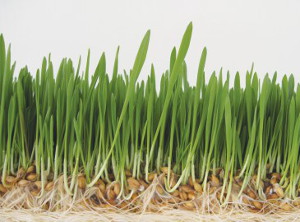
Sometimes positive and negative ions induced the same biological reaction. For instance, plants such as barley, oats and lettuce showed marked growth increase from increases in either positive or negative ions, although their protein, sugar and chlorophyll content was unchanged.
On the other hand, high concentrations of positive ions substantially increased the death rate of mice infected with fungus, bacteria or flu virus. Similarly ion depleted air, like that in urban environments, increased the death rate in mice infected with influenza. But high concentrations of negative ions had the opposite effect and decreased the death rate.The response of animals to air ions was shown to be linked to changes in blood levels of 5-hydroxy tryptamine or 5-Ht, also known as Serotonin. Serotonin is a powerful neurohormone capable of producing profound neurovascular, endocrine and metablic effects throughout the body.A readily reproducible and significant change in blood and brain levels of Sertonin was found to correspond to changes in ion density. Positive ions raised blood levels of Serotonin, while negative ions had the opposite effect.The chief metabolic route for removing Serotonin depends upon the enzyme monamine oxidase. Negative ions stimulate the enzyme, thereby lowering Serotonin levels, while positive ions block the action of the enzyme, allowing Serotonin levels to rise.Continuous treatment with negative ions produced statistically significant reductions in emotionality and brain Serotonin levels.
Krueger noted that Jean-Michel Olivereau, Psychophysiology Laboratory, University of Paris, surveyed air ion action on the hypothalamus, hypophysis, adrenals, thyroid, brain metabolism, behaviour, eating, spontaneous activity, psychomotor performance and adaptation to stress.
From the accumulated data Olivereau concluded that air ions alter blood levels of Serotonin which in turn causes physiological changes in the endocrine glands and central nervous systems. The end result is substantially altered basic physiological processes. For example, negative ions exert a measurable anxiety lessening effect, similar to that of tranquilizers.
Krueger noted Knoll’s experiments which found that negative ion concentrations effected more rapid visual reaction time in humans and Delaneau’s experiments which found that relatively small negative ion dosages were effective in inhibiting the development of gastric ulcers in starving rats.

Krueger was interested in French, Italian, German and Russian work on the ionic environment of spas, particularly those near waterfalls where, it was found, the air contained a high concentration of ions with the ratio of negative to positive considerably greater than normal.
Ions and winds of ill repute

Hot, dry winds like the Santa Ana, Foehn, Sirocco, Khasmin, Sharav and Mistral are referred to as Winds of Ill Repute. They are associated with respiratory distress.
Turning to adverse effects from certain ion environments, there are folklore traditions in nearly every country that link certain changes in weather with changes in health and behaviour. For instance, “winds of ill repute”, including the Foehn (Southern Europe), Sirocco (Italy), Santa Ana (United States), Khasmin (Near East), Sharav (Israel) and Mistral (France) are associated with respiratory distress, nervousness, headache and a multitude of other ills. So malign is their influence that when they blow, judges deal leniently with crimes of passion, surgeons postpone elective surgery and teachers expect more than the usual fractiousness from their students.Researchers found that 12 – 36 hours before the characteristic changes in wind, temperature and humidity, the number of ions increased (from 1500 ions to 2600 ions) and the ratio of positive to negative jumped from the normal 1.2 to 1.33. This early shift in ion density and ratio coincided with the onset of nervous and physical symptoms and was considered the only meteorological change that could be responsible for the discomfort associated with the Sharav.
Professor Felix Sulman in Jerusalem identified symptoms that afflict a large population segment a day or two before the onset of a Sharav and given them the collective name “Serotonin Hyper function Syndrome” because patients display an increased output of Serotonin in the urine.
Symptoms include insomnia, irritability, tension, migraine, dim vision, oedema, palpitations, precordial pain, respiratory distress, hot flashes, tremor, chills, diarrhea, polyuria, vertigo, and more. When treated with negative ions or with Serotonin blocking drugs the symptoms are reduced or eliminated.
Supporting laboratory evidence for the adverse effect in humans of air ion imbalances comes from a well controlled double blind experiment by Winsor and Beckett in which volunteer subjects developed a dry throat, husky voice, headache, itch or obstructed nose and a reduction in maximum breathing capacity when exposed to nasal inhalation of concentrations of positive ions.Offices, homes, even cities show ion imbalance. For instance a fourteen day study showed that in an office containing four people the air ion concentration dropped as the day went on, falling to 34 positive ions and 20 negative ions. Central heating and air conditioning and smoking contribute.A Swiss bank conducted a test in which 309 volunteers worked for thirty weeks in an area where the air was treated to develop a high ratio of negative to positive ions, while 362 controls, worked in untreated air. During the test, the ratio of days lost because of respiratory illness in the two groups was an incredible 1 to 16.Household activities of dusting and cooking lower ion levels, as does static electricity generated by synthetic fibers in clothing and room furnishing.
Ion counts vary

A test in a light industrial area of San Francisco by J. C. Beckett showed an ion count of less than 80 ions as compared to levels of 1500 – 4000 found in fresh unpolluted air. The test was done in 1959, not recently.
Air ion levels far at sea – normally very constant – are becoming appreciably lower with time, as air pollutants drift out from land. The importance of this is that increasing evidence shows ion depletion leads to discomfort, enervation and lassitude and loss of physical and mental efficiency.Following on, it is not surprising that high ion concentrations have medical applications. For instance hospitalized burn patients treated for 1 to 1.5 hours a day and out patients treated for twenty five to thirty minutes to negative ion concentrations as high as 10,000 ions showed a reduction in pain, restlessness and incidence of infection, with healing promoted.
.
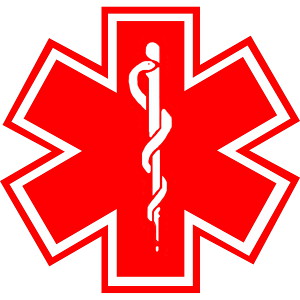 Medical Applications
Medical Applications
Burn patients present increased levels of Serotonin in damaged tissues and blood. Serotonin is associated with pain under some circumstances. Inhalation of negative ions increases the conversion of Serotonin to a physiologically inactive metabolite thus relieving pain.
Asthmatic infants exposed to positive ions showed an increased respiratory rate and degree of bronchospasm while infants treated with negative ions showed the opposite. Negative ion therapy terminated a spastic attack after a much shorter period than that required in conventional treatment. In addition, no adverse side effects common to drug therapy were observed with negative ionisation.Boulatov, a Soviet investigator, summarized thirty-five years of work treating over 3,000 bronchial asthma patients with high concentrations of negative ions: After a short period of exacerbation there followed substantial improvements to include normalization of blood, improved respiratory function and reduction in frequency and intensity of asthma attacks.Kornbleuh, the pioneer American investigator of air ions phenomena showed relief of acute hay fever symptoms in patients treated with high concentrations of negative air ions.
Monaco and Acker studied a group of Psychiatric patients and a group of non-patients. In the psychiatric patients, negative ionisation decreased systolic blood pressure, increased skin resistance and increased pulse finger volume, indicating increased parasympathetic nervous system activity. For the non patients, only a significant decrease in pulse finger volume occurred, indicating slight increase in sympathetic nervous system activity. Thus, it appears that negative ions have a normalising influence, lowering activation of the parasympathetic nervous system in psychiatric patients and increasing it of the non-patients.
Given the apparent relationship between air ions and neurohormones and reports that negative ions produce a sedative effect, the Catholic University in Buenos Aires tried using negative ions in treating a large number of patients suffering from psychoneurosis and anxiety syndromes. Sessions varied from fifteen minutes to two hours and the number of treatments from ten to twenty. Favorable results were seen in 80% of their patients.
M Deleanu claims success in treating gastro duodenal ulcers in animals and man using relatively low dosages of negative air ions.
You can read the piece in its entirety on Dr. Bob McCauley’s Blog.
Marian Diamond, a professor of neuroanatomy at the University of California, Berkeley, found levels of negative ions to be inversely related to serotonin levels in the brain. In other words, negative ions suppress serotonin levels. This is similar to the way that natural sunlight suppresses melatonin and accounts for the invigorating effect of fresh air and sunshine. On the other hand, If you deplete the air of negative ions, you experience an increase in serotonin and drowsiness ~ not what you want when mental agility is demanded. After significant depletion of negative ions you can feel closed in and depressed.
Serotonin – Melatonin Relationship
Serotonin is not all bad. The brain (as well as the retinas, bone marrow, and certain white blood cells) make melatonin from serotonin. Melatonin is, among other things, a powerful antioxidant that can slow Parkinson’s disease and ovarian cancer.
Negative ions at home
Epsom salts baths, even soaking your feet in Epsom salt solution produces negative ions. I’m thinking of holding my head over a bowl of hot water with Epsom salts, with a towel over my head to capture the negative ions.
Many house plants produce negative ions, similar to many air purifying machines. Negative ions attach themselves to (and effectively remove) particles such as dust, mold spores, bacteria, and allergens. (To me, it looks as if the dust is removed from the air, but not totally from existence.)
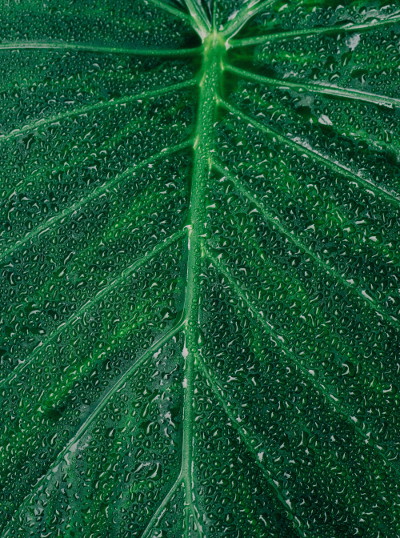
All plants produce negative ions. But, some are better at it than others.
Photo by Scott Webb from Pexels

Ivy is particularly good at producing negative ions.
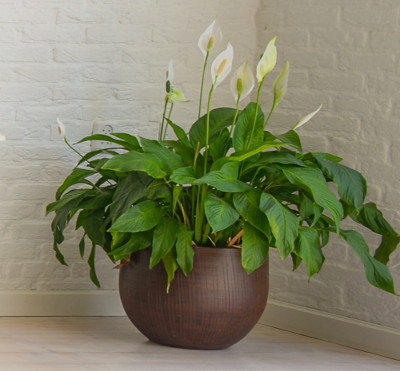
Peace Lily is also very good at producing negative ions.
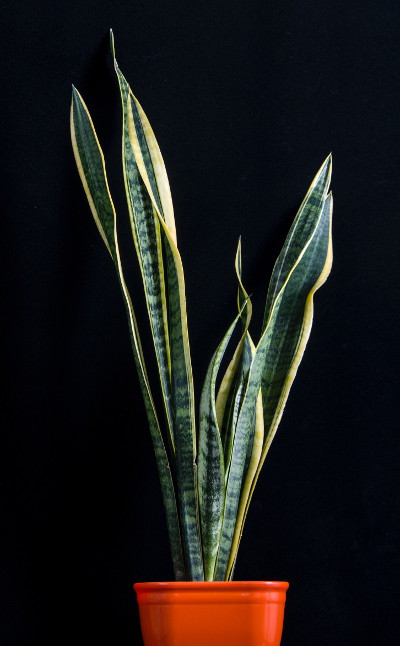
Mother in Law Tongue, aka Sansevieria and Snake Plant, is a good source of negative ions.
Photo by ehsan ahmadnejad from Pexels
Some plants noted for producing negative ions include ivy, chrysanthemum, coconut palm, gerbera, spider plant, peace lily and weeping fig.
A study from Reading University found school children performed better in exams when pot plants were placed in classrooms.
Air Ion Counter page has a lot of ion facts ~ Visit page.
What about a hyperbaric chamber?
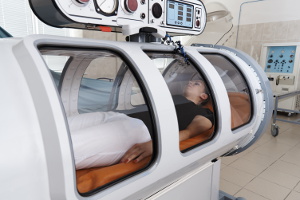
That was the question posed by a friend that sent me into research mode and I soon found a cautionary tale written by a professional team’s doctor or assistant coach.
After the team got a hyperbaric chamber, which helped injuries, every team member began using it in the belief it would provide a boost.
By the end of the season the team had lost all home games and won only away games.
This made the article’s author question the wisdom of using a hyperbaric chamber as much as it was being used. The author concluded that the reason away games were won was absence from the hyperbaric chamber.
Hyperbaric chamber depleted negative ions
In explanation he said the hyperbaric chamber depleted negative ions.
He said, basically, that negative ions are healthy and that we need them. To prove his point he noted that the team began winning at home when use of the hyperbaric chamber was restricted to players with injuries. Read more.
Learning about negative ions

I seriously think I lived here once when I was young. There was a pack rat, and a hummingbird came to the door nearly every morning. Not to mention a white horse in the meadow.
I began I looking up negative ions and discovered they are plentiful at the seashore, in mountain pine forests, after rain storms, and Epsom salts baths release negative ions.
My experience verified this when I was staying in a hotel while the privy pit which caused the hydrogen sulfide was being excavated. I used the hotel room’s air conditioner all the time, putting an imbalance of positive ions into the air. I began to feel less well, but, if I took an Epsom salt bath I was restored.
I discovered that a soak in Epsom salts reduced my swollen ankles by 70% or more.
My condo was built over an outdoor toilet pit ~ Read more.
When a friend gave me a salt lamp that releases negative ions I was thrilled. I used it 24/7. During the forest fires some years ago it kept my room from feeling and smelling smoky. Which was amazing to me.
What do negative ions do?
Negative ions clean the air of:
- Dust
- Pollen (grass, weed and tree pollen)
- Dust mites
- Animal dander
- Smoke & Odor
- Mold spores
Negative Ions help relieve symptoms of:
- Hay fever
- Asthma
- Seasonal affective disorder
- Depression
- Chronic fatigue
Negative ions from Rock Salt Crystal
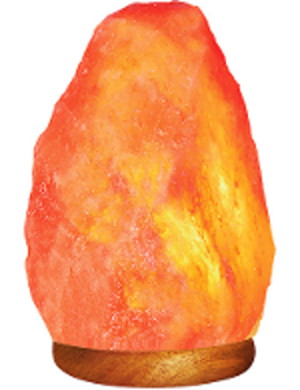
Rock salt crystal is known to efficiently emit negative ions that improve air quality.
Salt lamps create a microclimate similar to that following a light spring storm.
Fresh pine forest and seashore air carries around 4000 negative ions per cubic centimeter whereas city air during rush hour has around 100 to 120 ions per cubic centimeter.
One of the reasons we feel good when we are near a waterfall, in a pine forest, or at the seashore is the presence of negative ions in the atmosphere creating a sense of well-being.
Meanwhile, those pesky positive ions
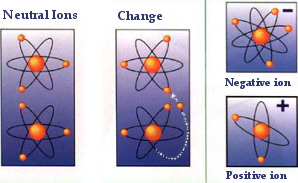 When I wrote “pesky” I lacked an understanding of just how powerfully damaging positive ions can be. I wrote this bit when the page was much shorter and before I had learned about “Winds of Ill Repute”, several paragraphs above.
When I wrote “pesky” I lacked an understanding of just how powerfully damaging positive ions can be. I wrote this bit when the page was much shorter and before I had learned about “Winds of Ill Repute”, several paragraphs above.
Computer screens, electrical appliances, air-conditioning, TV sets, and if you smoke, tobacco, are but a few sources of overabundant positive ions in our homes that cause bad moods, weakness, sleeplessness, even illness.
In the outside environment positive ions are being discharged by high voltage networks, heating and cooling plants, radio and television transmitters, and radar systems among other things.
